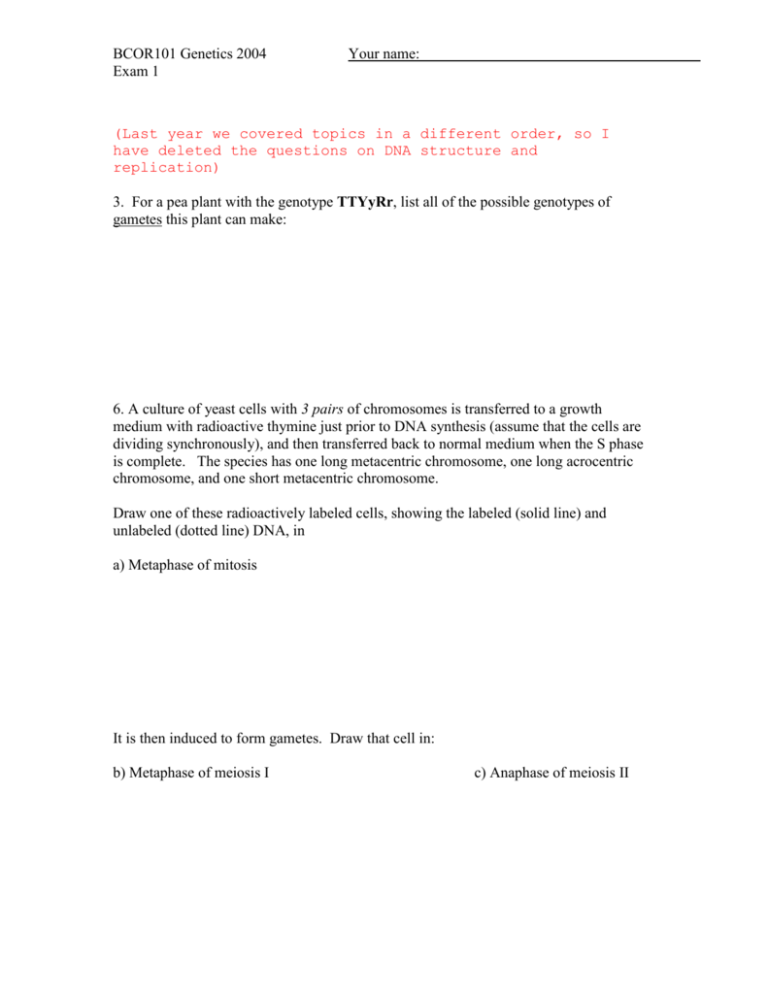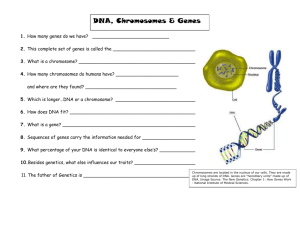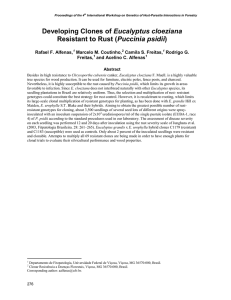In the fruit fly Drosophila melanogaster, curly wings is a recessive
advertisement

BCOR101 Genetics 2004 Exam 1 Your name: (Last year we covered topics in a different order, so I have deleted the questions on DNA structure and replication) 3. For a pea plant with the genotype TTYyRr, list all of the possible genotypes of gametes this plant can make: 6. A culture of yeast cells with 3 pairs of chromosomes is transferred to a growth medium with radioactive thymine just prior to DNA synthesis (assume that the cells are dividing synchronously), and then transferred back to normal medium when the S phase is complete. The species has one long metacentric chromosome, one long acrocentric chromosome, and one short metacentric chromosome. Draw one of these radioactively labeled cells, showing the labeled (solid line) and unlabeled (dotted line) DNA, in a) Metaphase of mitosis It is then induced to form gametes. Draw that cell in: b) Metaphase of meiosis I c) Anaphase of meiosis II BCOR101 Genetics 2004 Exam 1 Your name: 11. Melampsora lini is an important plant disease called ‘flax rust’. Different strains of flax are differently susceptible to the disease, and some strains of the fungus are more virulent than others. The “Bombay” variety of flax is resistant to fungus strain 22 but susceptible to 24. The variety 770B is the opposite: resistant to 24 but sensitive to 22. When Bombay is crossed to 770B, all of the F1 are resistance to both strains of flax rust. Those F1 are self-fertilized and you get the following data: Resistant to strain 22, sensitive to strain 24 Resistant to 24, sensitive to 22 Sensitive to both 22 and 24 Resistant to both 22 and 24 41 plants 35 plants 9 plants 110 plants Explain the likely inheritance pattern of resistance to flax rust. 12. In the fruit fly Drosophila melanogaster, ebony body (eb) is a recessive mutation. A true breeding line with ebony body was crossed to the wild type line and the offspring mated among themselves to produce an F2 generation. What proportion of the flies in the F2 had normal body color? If all of the normal F2 flies are allowed to mate among themselves, what proportion of their offspring will have ebony bodies? 13. Huntington’s disease is a rare dominant trait that causes neurodegeneration later in life. It is rare enough that a randomly chosen person almost certainly does not have the disease. A man in his thirties, who already has three children, discovers that his mother has Huntington’s disease a) What is the probability that he will develop the disease? BCOR101 Genetics 2004 Exam 1 Your name: (this question continues on the next page) 13, cont. b) What is the probability that his first child will develop the disease? c) What is the probability that at least one of his three children will develop the disease? Your book discusses several topics that we did not cover in detail during lecture. Choose TWO of the following questions from the book: 14. What it the difference between A, B, and Z DNA? 15. In E. coli, how does DNA replication get started? (is there a particular signal or location? What are the initial steps?) 16. If a man with type A blood marries a woman with type B blood, what blood types could their children have? If more than one, which is/are most likely?











